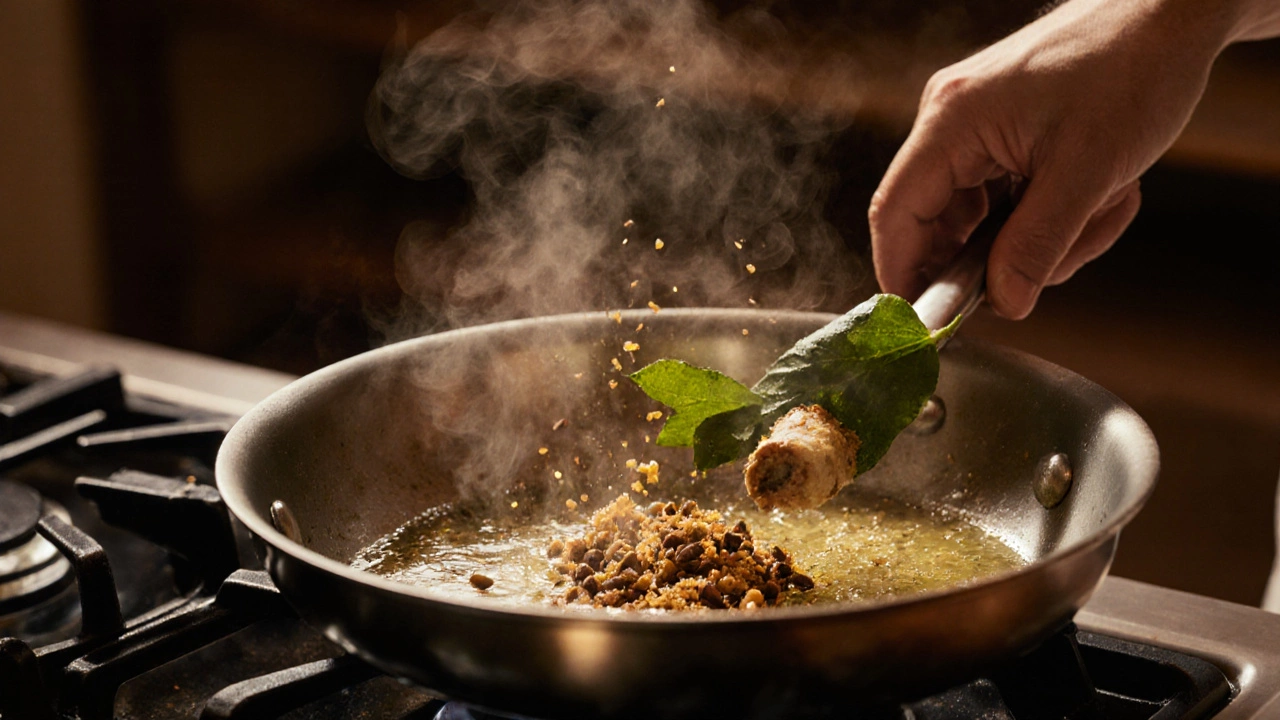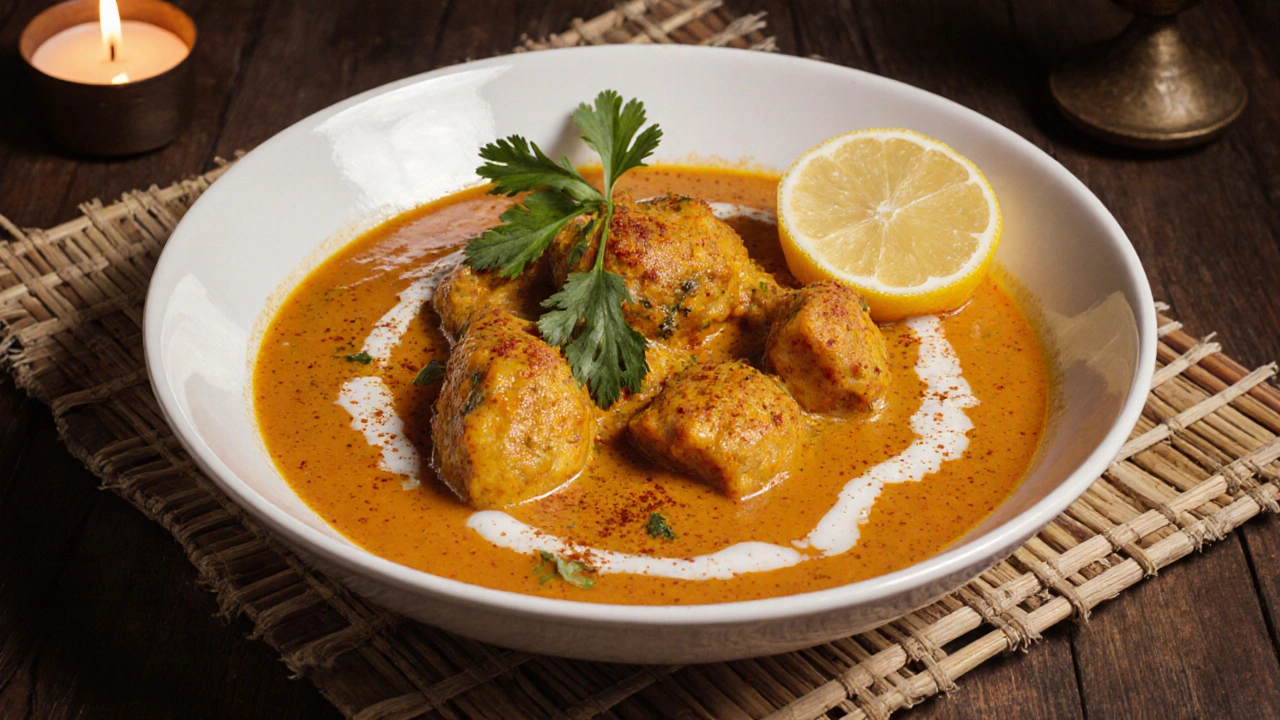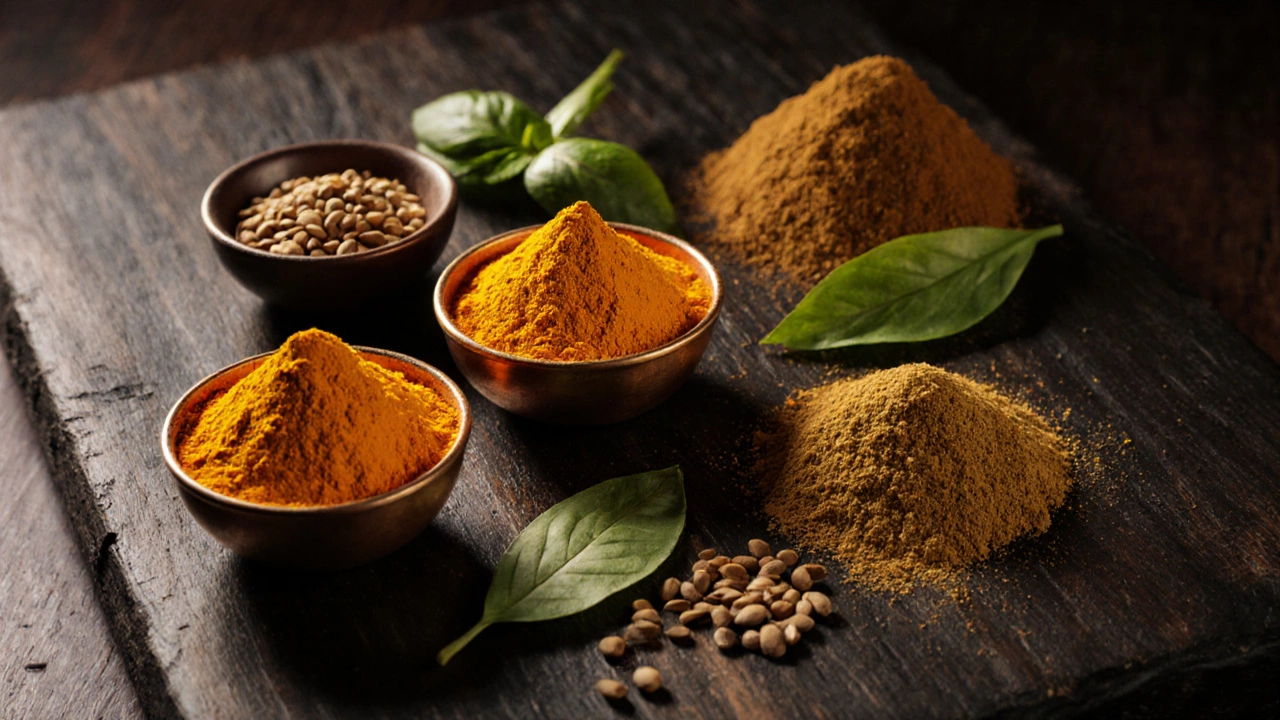Curry Spice Calculator
Recommended Spice Quantities
Tip: For milder heat, reduce chili powder; for more flavor, add ½ tsp garam masala at the end.
Ever wondered why every chicken curry you taste seems to have that unmistakable curry flavor no matter where you’re cooking? The secret isn’t a single magic herb - it’s a blend of key ingredients that work together to create the warm, earthy, and slightly sweet profile we all recognize as “curry.” Below we break down the essential spices, fresh aromatics, and tips for building a base that makes any curry taste like curry.
Understanding the Curry Flavor Profile
At its core, a good curry balances four main sensations: heat, depth, brightness, and a hint of bitterness. Heat usually comes from chili peppers or powder, while depth is supplied by earthy spices like turmeric and cumin. Brightness often arrives from ginger, garlic, or fresh herbs, and the bitter edge comes from fenugreek or mustard seeds. When these elements harmonize, you get the signature aroma that makes you think, “Yes, that’s curry!”
Turmeric: The Golden Foundation
Turmeric is a bright orange‑yellow root powder that adds earthy bitterness and a vivid color to curries. Its curcumin compound not only gives curry that golden hue but also contributes a subtle, peppery note that grounds the dish. A typical chicken curry uses ½ to 1 teaspoon of turmeric per pound of chicken.
Garam Masala: The Complex Aromatic Blend
Garam Masala is a toasted mixture of spices such as cinnamon, cardamom, cloves, and black pepper, added at the end of cooking for aroma. The term means “hot spice blend,” but it’s more about warmth than heat. A pinch or two of garam masala lifts the entire curry, giving it that lingering fragrance that makes you smile with the first spoonful.
Foundational Spices: Cumin and Coriander
Cumin is a seed with a nutty, earthy flavor that deepens the savory backbone of a curry. Ground cumin is usually toasted briefly in oil to release its oils, then mixed with other spices. Use about 1 teaspoon per batch.
Coriander is the seed of the cilantro plant, offering citrusy, slightly sweet notes that brighten the spice mix. It pairs perfectly with cumin, and a teaspoon of ground coriander rounds out the flavor spectrum.

Fresh Aromatics: Ginger and Garlic
Ginger is a rhizome that adds zesty heat and a fragrant spice note, essential for balancing richness. Grated or minced, 1 tablespoon of ginger per pound of chicken keeps the palate lively.
Garlic is a bulb that provides a savory depth and a subtle sharpness, rounding out the overall taste. Two to three cloves, finely chopped, are enough to marry the other spices together.
Curry Leaves and Fenugreek: The Subtle Game‑Changers
Curry leaf is a glossy, aromatic leaf used mainly in South Indian cooking, delivering a sweet, citrus‑like perfume. A handful of fresh leaves, fried in oil at the start, adds a distinctive lift.
Fenugreek is a seed with a slightly bitter, maple‑syrup flavor that deepens the earthy side of the curry. Just a pinch of toasted fenugreek seeds can prevent the dish from feeling flat.
Step‑by‑Step: Building a Curry Base That Tastes Like Curry
- Heat 2tbsp of neutral oil (canola or vegetable) in a large pan over medium heat.
- Add 1tsp cumin seeds and ½tsp mustard seeds; let them sizzle until they pop.
- Stir in a handful of fresh curry leaves and 1tsp grated ginger. Cook for 30seconds.
- Add 2‑3 minced garlic cloves; sauté until fragrant (about 1 minute).
- Sprinkle 1tsp turmeric, 1tsp ground coriander, and ½tsp ground cumin. Stir to coat the aromatics, cooking for another minute to toast the powders.
- Introduce chicken pieces (about 1lb) and brown them lightly on all sides.
- Pour in 1cup of coconut milk or tomato‑based puree, depending on your style. Bring to a gentle simmer.
- Season with salt, 1tsp chili powder (adjust heat), and a pinch of fenugreek.
- Cover and let simmer for 20‑25minutes, or until chicken is tender.
- Finish with ½tsp garam masala and a splash of fresh lemon juice for brightness.
Following these steps ensures each layer of flavor is built on a solid spice foundation, giving you that unmistakable curry taste every time.

Comparison of Key Curry Ingredients
| Ingredient | Primary Flavor Note | Typical Amount (per lb chicken) | Best Pairings |
|---|---|---|---|
| Turmeric | Earthy, slightly bitter | ½-1 tsp | Cumin, coriander, coconut milk |
| Cumin | Nutty, warm | 1 tsp | Turmeric, chili powder |
| Coriander | Citrusy, sweet | 1 tsp | Cumin, garam masala |
| Garam Masala | Complex, aromatic | ½-1 tsp (added last) | All other spices, yogurt |
| Curry leaf | Sweet, citrus‑like | 5-6 leaves | Mustard seeds, ginger |
| Fenugreek | Maple‑sweet, bitter | Pinch | Turmeric, chili |
Pro Tips and Common Pitfalls
- Toast, don’t burn. Lightly toasting whole spices releases their oils. If they turn black, they become bitter.
- Use fresh ginger and garlic. Dried powders lose their sharpness after a few months.
- Don’t add garam masala too early. Its volatile aromas evaporate with prolonged heat, so stir it in at the very end.
- If the curry tastes flat, add a squeeze of lime or a dollop of plain yogurt - acidity and cream balance the spice intensity.
- Adjust heat with chili powder or fresh chilies, but remember the flavor base matters more than the fire.
Frequently Asked Questions
What is the single most important spice for curry flavor?
Turmeric provides the characteristic earthiness and color, but the true signature comes from the blend of spices, especially garam masala, which ties everything together.
Can I make a good curry without garam masala?
You can, but the result will lack the layered aroma that garam masala provides. Try a homemade mix of cinnamon, cardamom, cloves, and pepper if you’re out of store‑bought garam masala.
Why do some curries taste “flat” even with many spices?
Flatness often comes from over‑cooking the spices, which burns off their aromatics, or from using stale powders. Toast spices briefly, use fresh ingredients, and finish with garam masala for a lift.
How much chili should I add to keep the curry balanced?
Start with ½ teaspoon of chili powder for a mild heat, taste, then increase in ¼‑teaspoon increments until you hit your preferred spice level. Remember the spice blend matters more than heat.
Is curry powder the same as garam masala?
No. Curry powder is a Western invention that usually includes turmeric, coriander, cumin, and sometimes fenugreek. Garam masala is an Indian blend focused on warm, aromatic spices and is added at the end of cooking.
